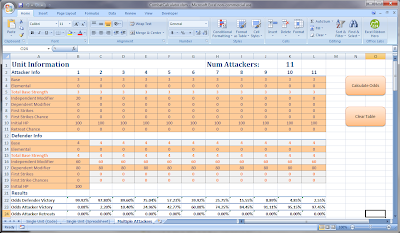Let's talk about technology systems in 4x games and how particular design decisions impact the overall game experience. I'll be presenting examples from Civilization IV, Victoria II, and Master of Orion II.
The Examples:
Most 4x strategy games have some sort of system to represent technological progress during the game's play period. These systems are made up of component parts, which are often referred to as
technologies. Each technology has
inventions. These names can vary based on the game's setting.
The relationship between technologies and inventions is not fixed between game systems.
For example, in Civilization IV, if a player possesses a particular technology, they have access to every possible invention unlocked by that technology. Below is a screenshot of the Machinery technology page. A player who owns Machinery will have access to all the units, abilities, and buildings unlocked by that technology from the moment they acquire it.
 |
| A technology page from Civilization IV |
Under a Civilization model of technologies and inventions, technologies are the player's primary focus. Players plan around which technologies they will acquire and when. Since inventions can skew the battlefield in the player's favor, their associated technologies become more valuable. Beating your competitors to a particular technology by a handful of turns matters a great deal.
The designers of Victoria II took a different approach. Instead of a technology granting all of its inventions upon discovery, the technology gives some immediate boost and a chance over time to unlock a series of other inventions.
Below, you can see that Advanced Metallurgy gives an immediate boost to Sulphur production, and a chance over time at Steel Alloys and Electric Rolling Techniques. The list of possible inventions shows inventions that the player (me in this case) has not yet discovered and the percentage chance to discover each month.
 |
| Technology Screen from Victoria II |
The Victoria model is very similar to the Civilization model. A technology will eventually grant all of the inventions associated with it, given sufficient time. Players can still plan around the immediate benefits of a technology, but they now need to include lead time in their plans when accounting for inventions.
I found in my own gameplay that this model encouraged a beeline to a particular technology (to start rolling for its inventions as soon as possible) and then back-filling other technologies which gave important benefits, but had no inventions associated with them.
Under the Victoria model then, beating your opponents to a key technology whose benefits are tied to inventions is less important than for a Civilization style model. The player's primary focus, however, is still on the technologies themselves, rather than their associated inventions.
In Master of Orion II, each technology level has several inventions associated with it, but most races in the game will only be able to choose one invention to develop from each level. Missing inventions could be traded for, or stolen from, other races.
 |
| MoO II Technology Screen |
In the MoO II system a player plans to gain particular inventions, rather than technologies. This style of system adds another layer to a player's technology decisions. Instead of choosing between which technologies to prioritize, the player must also choose between the inventions. They might be able to back-fill inventions later with diplomacy and espionage, but there's no guarantee that they'll ever be able to acquire an invention that they pass over.
Bringing it All Together
Technologies and invention play an important role in all three of these games, though how much of the player's focus they take up varies.
The Civilization model is best for games which want to encourage precise player planning. Players can easily grasp the direct relationships between the technologies they acquire and the units and buildings they can make use of in the rest of the game.
The Master of Orion model has similar strengths to the Civilization model, but puts an additional emphasis on the choices a player makes when they acquire technologies. It encourages the player to put more focus on their inventions, what they have and what they're missing, and leaves additional design space for espionage and diplomacy systems.
A Victoria style model encourages players to budget in slack time into their plans, to allow for the acquisition of inventions over time. I think that it de-emphasizes precision technology planning and encourages the player to spend less focus on the technology portion of the game and more focus in other fields. Additionally, when balancing technologies in a Victoria system, a technology with no inventions associated with it becomes a prime candidate for back-fill or back-burner status.





